
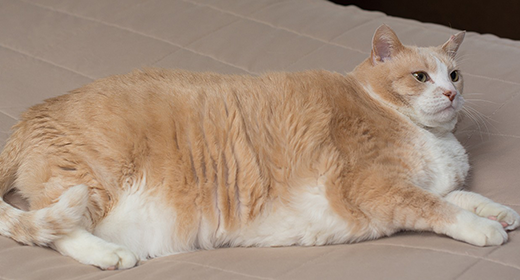
An obese cat is not a pretty sight. Cumbersome and clumsy, they suffer a marked loss in athletic ability and appearance. Decreased flexibility prevents them from thoroughly grooming, which can cause skin problems. Obese cats also have an increased risk for diabetes and are poor candidates for surgery and anesthesia.
Obesity results when an animal consistently eats more calories than they need. This can be caused by overfeeding, inactivity, reproductive status, environment, body type, age or genetics.
Assessing body condition is important in the overall evaluation of your cat’s nutritional well-being and can help in determining feline obesity. Take a few moments to follow the easy directions in the Cat Body Condition Chart for assessing your cat’s body condition.
If you suspect your cat is obese, the first step is to consult your veterinarian.
Your veterinarian will probably ask you some questions about your cat, such as how much they eat and how much physical activity they get. Answering these questions honestly will help your veterinarian recommend some simple changes to help improve your cat’s weight. Your veterinarian may also perform tests to detect medical conditions that may contribute to obesity — you want to rule these out before starting your cat on any weight-management program.
Your veterinarian may first suggest reducing the amount you feed your cat. If so, begin by reducing the daily portion by 25%. Continue decreasing intake by 10% increments every two to three weeks until your cat loses 1% of their starting weight. For example, if your cat weighs 15 pounds, a 1% loss would be 2½ ounces.
If you feed one large meal a day, or keep food available at all times, try dividing the daily ration into several small meals (at least two meals a day) and pick up what your cat doesn’t eat 30 minutes after each meal.
A diet that contains slowly digested carbohydrates, such as corn and sorghum, can result in lower blood sugar and insulin levels than a diet that contains rice as the primary carbohydrate source. Lower blood sugar and insulin levels can also help with maintaining a proper weight.
Changing diets can be stressful for pets, so if your veterinarian recommends changing diets, proceed slowly.
Begin with a daily portion that mixes 25% of the new food with 75% of the old food. The next day, increase the amount of new food to 50% and decrease the amount of the old food to 50%. During the next few days, continue increasing the proportions of the new food and decreasing the amount of old food until the food consists entirely of the new diet. This method increases the likelihood that your cat will accept the new diet and decreases the occurrence of stomach upsets.
Another way to help your cat lose weight is to increase their activity. Provide cat trees for climbing, or teach your cat to play fetch or walk on a leash. Buy or create your own toys that encourage exercise. One ingenious owner tosses her cat’s dry food ration across the room a piece at a time!
You also can use your cat’s natural hunting instinct to help them lose weight. Hide several small portions of their daily food ration around the house. If you have a multilevel home, make your cat use the stairs.
Use your imagination, but be cautious. Don’t let a fat cat get exhausted, overheated or out of breath. Also, keep in mind that a senior cat may not be able to exercise vigorously.
Replace food treats with rewards like playtime, grooming, stroking or conversation. If you cannot resist the fat cat who begs for food at the dinner table, keep them in another room during dinnertime. If you have a multi-cat household, the consistent winner of the food competition sweepstakes is often obese. If this is the case, separate the cats at mealtimes if possible.
Obesity is easier to prevent than to cure, but it is never too late to reverse it — though it requires long-term patience and commitment. Helping cats lose weight is a slow process. If the amount they eat is severely restricted, the cat risks other health problems.
Increased activity, behavior modification (for both you and your cat) and calorie restriction are your best tools for helping an obese cat lose weight. However, it is important to expect a few setbacks and plateaus. It will take at least four months for an obese cat to lose 15% of their starting weight. At that point, have another look at your cat’s body condition and go from there.
Tips for Starting a Weight-management Program for Your Cat

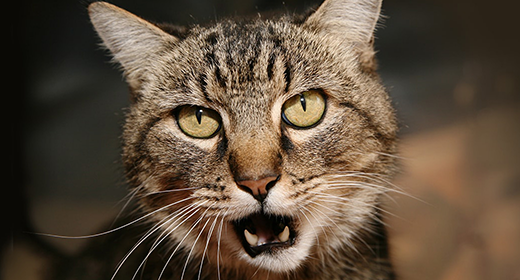
What is it about owning a cat that just makes life better? After all, cat ownership isn’t all snuggles and purrs — it can be a big responsibility. They eat every day. (Who would’ve guessed?) They need routine health care, just like their owner. Some cats are serious fur factories, and some will hack up hairballs the size of a kitten. Despite all of the duties and challenges, owning a cat improves our lives. Let’s dive into how cats help humans.
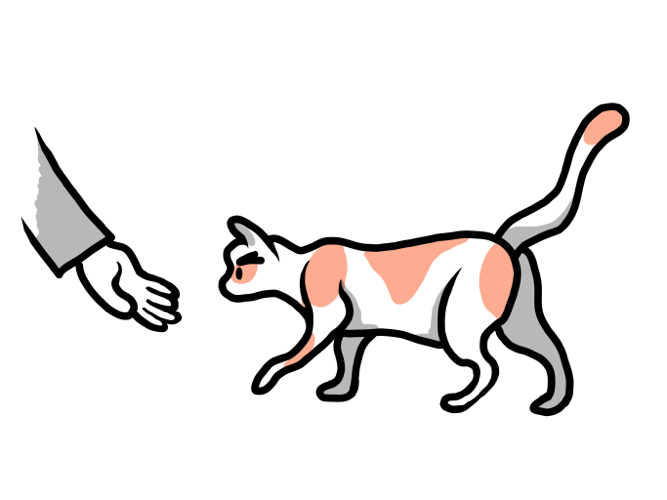
You’ve probably heard that cats are aloof, but that’s not always the case. They can be affectionate, playful and highly attached to their owners, much like a dog. It’s just that cats are at a disadvantage versus dogs because they don’t have the facial physiology that lets their canine counterparts “smile” all the time.
So, don’t be fooled — cats are not only happy; they’re also immensely talented at bringing joy to their humans. In the market for crazy antics one minute, soft cuddles the next? Cats are a low-risk, high-yield investment in complex personalities.
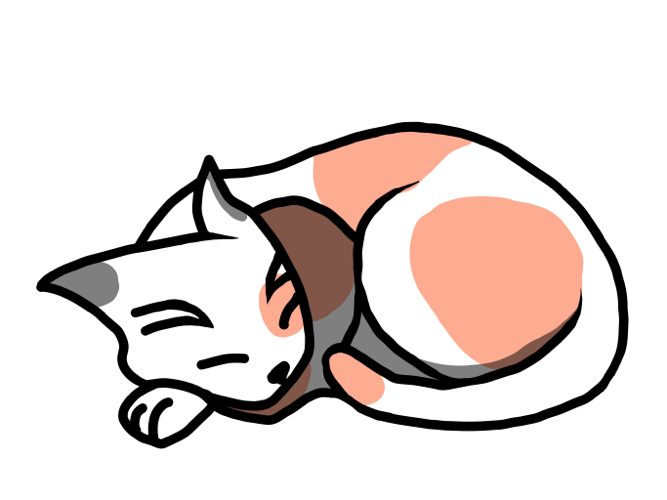
With any cat adoption, you are literally saving that animal’s life. Plus, you’re supporting the organization you adopt from, which in turn allows them to help more animals in need, so you’re basically a hero. And all these good feelings happen before you even bring your new kitty home!
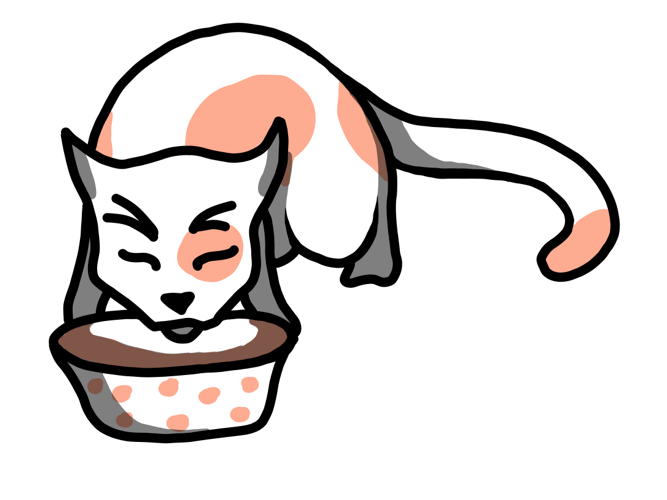
Who couldn’t use another friend? Especially one that’s a furry, adorable biscuit factory. Research shows that having a cat can reduce stress and increase confidence, and it’s hard to beat quality time with a cat for anxiety relief. Journalist Jane Pauley once said, “You cannot look at a sleeping cat and feel tense.”
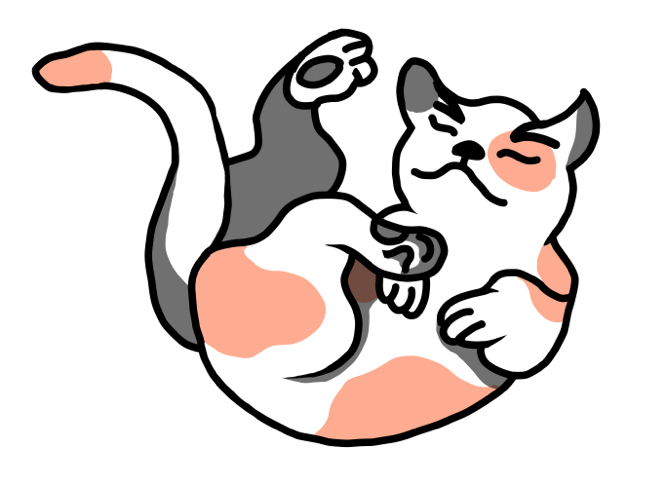
Adopting a cat can be a great move for children, too. There’s no better way to nurture values such as responsibility and empathy than with a frolicky, purr-motored pal. A survey of parents found that children who had bonded with a feline friend enjoyed a higher quality of life. (They wanted to survey the cats too, but there was a sunny spot on the carpet that needed to be napped in, so …)
Cats are amazing. They entertain us by defying gravity and contorting themselves into spine-twisting postures. An inquisitive meow or a nudge with their head can totally banish a bad mood. They are the perfect companion to all. If you’re thinking about adding a cute, fluffy, serotonin-boosting kitty cat, this is your sign: Do it!